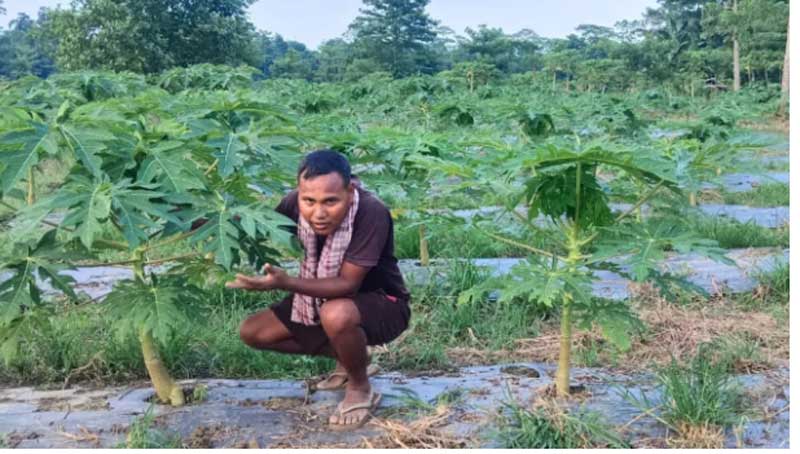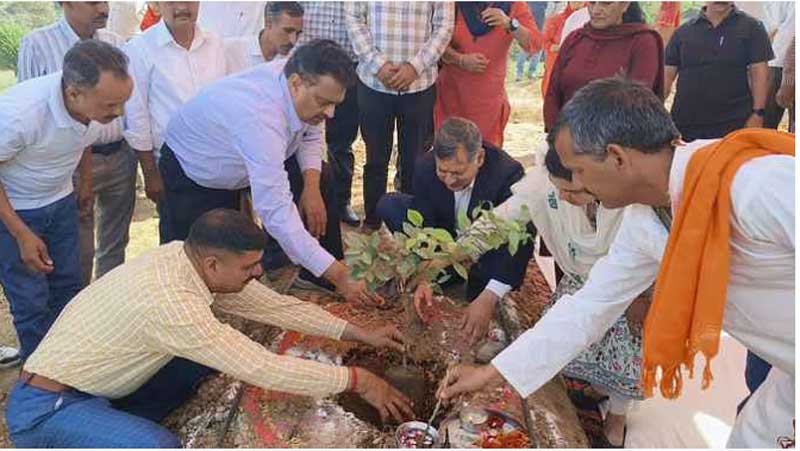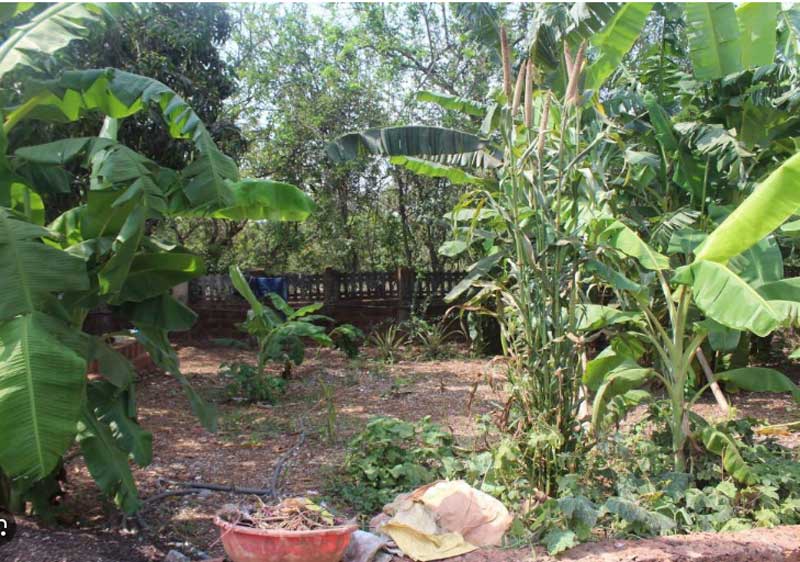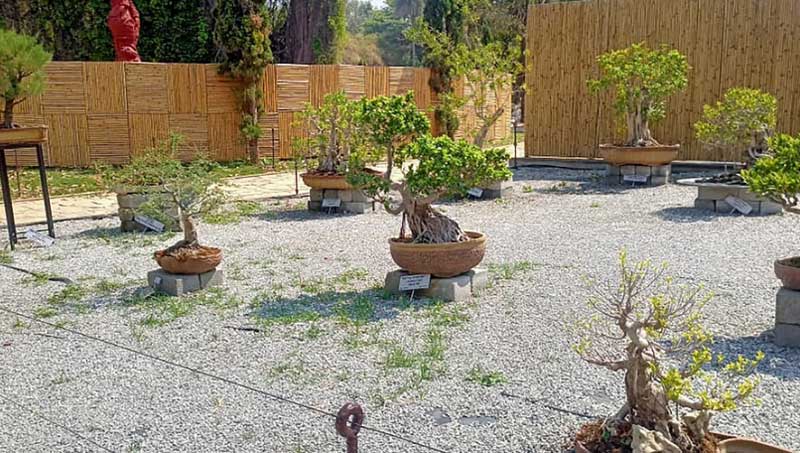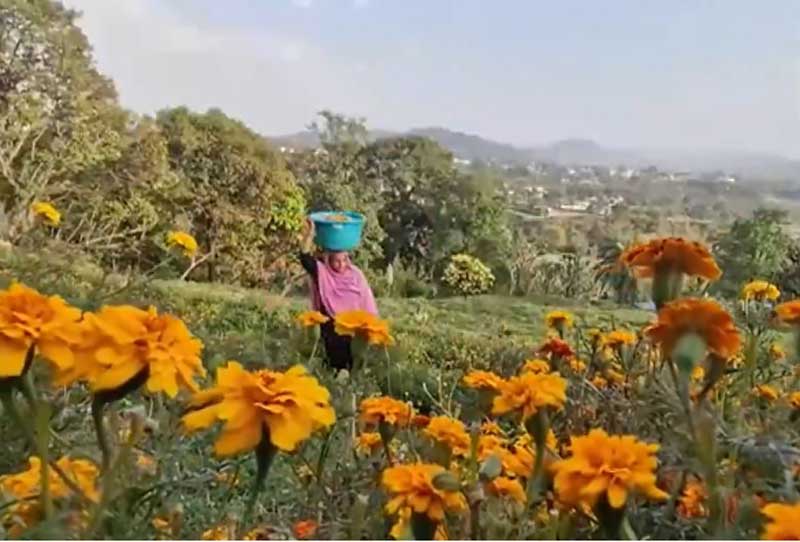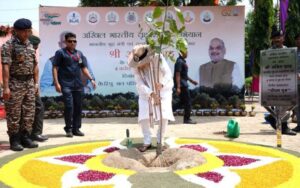NURTURING NATURE: Rekindle global pursuit to adopt environment friendly practices
By YP Singh
Giving a clarion call to rekindle a global pursuit to adopt environment friendly lifestyles and practices, Prime Minister Narendra Modi had introduced the concept of LiFE, i.e., Lifestyle for Environment at the World Leaders’ Summit in Glasgow at COP26. Taking a leaf out of his sublime suggestions, a mega plantation drive was launched recently to supplement conservation of the Aravalli ecosystem at Aravalli Biodiversity Park, Vasant Kunj, New Delhi in the run up to Harit Mahotsav. Hundreds of native and endemic plants were planted.
This Plantation Drive seeks to create awareness to preserve the biodiversity of habitat and to conserve keystone species and other threatened plant and animal species, establish field gene banks for threatened land races and wild genetic resources, promote education on environmental awareness and nature conservation, establish native communities of the Aravalli hills and the River Yamuna basin particularly of the Delhi region, develop mosaic of treatment and catchment wetlands that not only improve the water quality of untreated sewage but also sustain the rich aquatic flora and fauna of the Yamuna and monitor short term and long term changes in the ecology of the Delhi region.
Recently, whole of Hindustan celebrated World Nature Conservation Day. As a part of Mission LiFE, a comprehensive and non-exhaustive list of 75 individual LiFE actions have been identified across 7 themes – save water, save energy, reduce waste, reduce e-waste, reduce single-use plastics, adopt sustainable food systems, and adopt healthy lifestyles.
India has drawn a roadmap for tackling climate change and environment protection by maintaining a balance between present requirements and future vision and in the last 9 years, various initiatives such as Green Hydrogen Mission, Natural Farming efforts, focus on green and clean energy were introduced. Even in the midst of the global pandemic, India continued to make progress while maintaining the balance between ecology and economy.
India has successfully raised the issue of Climate Justice before the International Community. Mission LiFE and its reference in various international documents such as Preamble of Paris Agreement, Cover decision of COP 27, IPCC 3rd Working Group Report and in the recent paper by International Energy Agency speak volume for itself. In addition to the three international initiatives by India; International Solar Alliance, Coalition for Disaster Resilient Infrastructure and Leadership Group for Industry Transition, International Big Cat Alliance was also launched recently.
Acknowledging the importance of conservation of Ramsar Sites i.e. Wetlands of International Importance, the Government of India announced ‘Amrit Dharohar’ initiative as part of this year’s Budget announcement to promote the unique conservation values of Ramsar Sites. Highlighting the importance of local communities in conserving the wetland ecosystem, implementation Strategy of “Amrit Dharohar” has also been launched, which is another example of Government’s commitment to the philosophy of conservation through community participation, and prosperity through conservation.
“Mangrove Initiative for Shoreline Habitats and Tangible Incomes” (MISHTI) was announced in the Union Budget 2023-24 to promote and conserve mangroves. Mangroves are unique, natural eco-system having very high biological productivity and carbon sequestration potential, besides working as a bio-shield. The Programme will cover approximately 540 sq km area across nine coastal States and four UTs in five years (2023-2028). It will create around 22.8 million man-days with estimated carbon sink of 4.5 million tons of Carbon. It will also create potential areas for nature tourism and livelihood potential for local communities.
The Paris Agreement of UNFCCC
The Paris Agreement of the United Nations Framework Convention on Climate Change (UNFCCC) in Article 4, paragraph 19, states, “All Parties should strive to formulate and communicate long-term low greenhouse gas emission development strategies, mindful of Article 2 taking into account their common but differentiated responsibilities and respective capabilities, in the light of different national circumstances.”
In light of above, India launched its long-term low carbon development strategy at the 27th session of Conference of Parties (COP-27) to the UNFCCC. The strategy was launched by Union Minister for Environment, Forest and Climate Change, Bhupender Yadav, who led the Indian delegation to the COP 27 from 6-18 November, 2022.
India’s approach is based on the following four key considerations that underpin its long-term low-carbon development strategy: (i) India has contributed little to global warming, (ii) India’s historical contribution to cumulative global GHG emissions is therefore minuscule despite having a share of ~17% of the world’s population, (iii) India is committed to pursuing low-carbon strategies for development and is actively pursuing them, as per national circumstances, (iv) India needs to build climate resilience.
Conservation and protection of mangroves
The Government has taken several steps to protect sustain, conserve and augment forests in the country through promotional as well as regulatory measures. The promotional measures are being implemented through a Central Sector Scheme under National Coastal Mission Programme on ‘Conservation and Management of Mangroves and Coral Reefs’. Under this programme, annual Management Action Plan (MAP) for conservation and management of mangroves are formulated and implemented in all the coastal States and Union Territories.
Environment is not just a global cause, but the personal and collective responsibility of every individual. Prime Minister Narendra Modi, in a message shared at the inaugural session of the 22nd edition of the World Sustainable Development Summit (WSDS) in New Delhi had noted that “the way forward is through collectiveness rather than selectiveness.”



